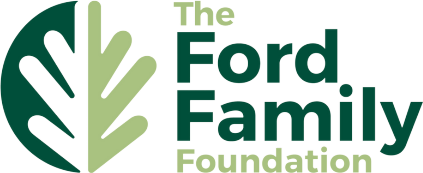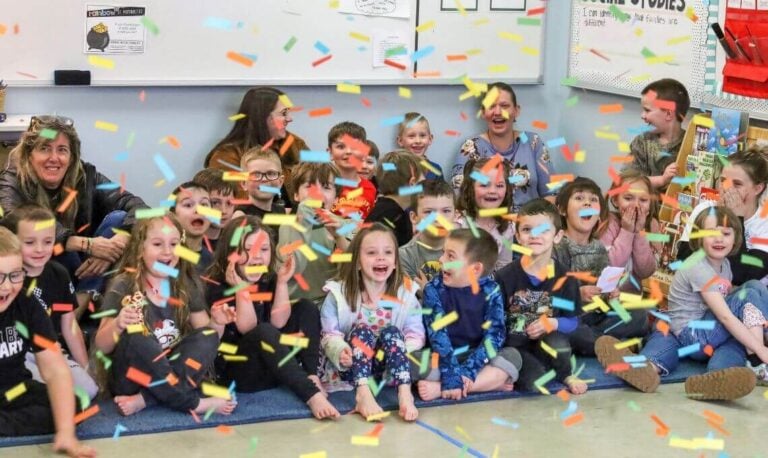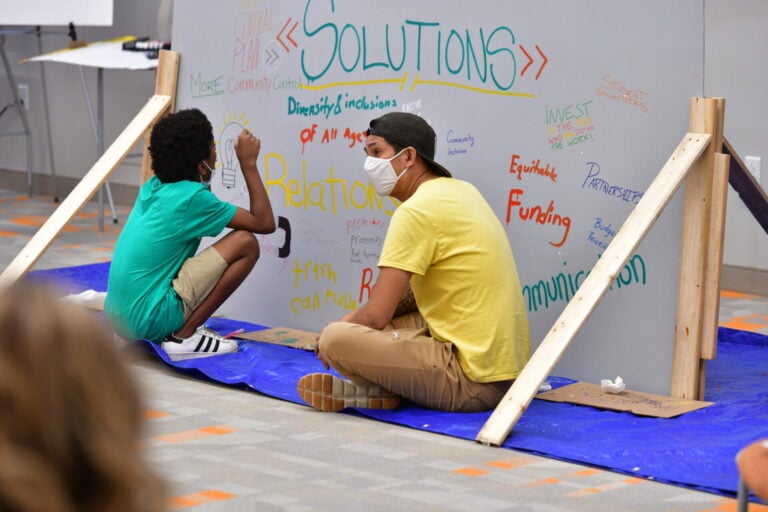Tools & Resources to Shift Power to Communities
Browse Menu
Looking at your role/function within your foundation.
What are listening practices that can shift power?
Assess how you are listening through a set of reflection questions.
Engaging in other large-scale listening activities
For funders committed to shifting power to, and sharing power with, those most impacted by their work, participation is key. Participatory approaches in philanthropy center the leadership, wisdom, and voices of communities. They shift power from philanthropy’s traditional power centers (i.e., the donors and institutions that control the money) to the people and communities directly affected by the issues being addressed.
Resources to shift power
- Melinda Tuan and Rick Moyers
- Fund for Shared Insight, via The Center for Effective Philanthropy
- Fund for Shared Insight
- Marshall H. Ginn, Capital Philanthropy
- Leah Kral, Two Larks Consulting
Get inspired by what other funders are working on
While overall less than one-quarter of the number of grants from U.S. foundations for global efforts go directly to organizations with headquarters in the countries where the work is done, nearly all of Segal Family Foundation’s grantee partners are African-led, and all of the foundation’s program officers are based in the countries where they are making grants. Additionally, a board comprised mostly of representatives from former in-country grantees advises the foundation’s governing board.
“Communities that we serve are at the forefront,” says Sharonrose Msaki, a Segal Family Foundation senior program officer based in Tanzania. “They’re leading, their voices matter.”
She says she and her colleagues listen in formal and informal ways, including through regular conversations with grantees and community members in their primary language when possible. She notes that frequent interaction is key to relationship building and to gaining insights into the context and background of a community.
Such conversations led the foundation to adjust a grantmaking rule limiting the number of years organizations can receive funds. In Burundi, for example, where there is relatively little investment by private philanthropy, the limit is now more flexible. And in response to concerns about the limits elsewhere, Segal started a “Luminary Circle” to promote and amplify the work of its former grantee partners to draw the attention of other potential donors.
When The Ford Family Foundation learned that families in one of the Oregon towns where it works wanted stronger pathways to kindergarten for their children, it did not jump to a quick decision, such as to build a new preschool. Instead, the funder spent years supporting relationship-building in the community, creating dialogue to understand barriers around school readiness, and building trust and muscles for community organizing.
“If a new preschool was a solution we had prescribed for the community, would families really want to take their kids there? Would the town have rallied?” asked Kara Inae Carlisle, president and CEO of The Ford Family Foundation. “What Yoncalla did, through their own process, was begin to think about what they wanted for their community, what they wanted for their kids, how they wanted the school to operate.”
Pointing to Yoncalla Early Works, the community hub providing preschool and other services that was eventually built with the foundation’s support, Carlisle said she recognizes that the foundation could not have created it alone, or by simply providing funding. “We can’t grant-make our way out of any of these issues,” she said. Instead, for every effort the foundation takes on, she said, “we think about what power we want to hold and what we don’t want to hold,” and where the foundation can build capacity among others, especially by helping to activate the sometimes “invisible capital” within communities.


When The Ford Family Foundation began to shift its rural community building strategy from “leadership development” to “community development,” a new staff position — field coordinator — played a significant role in implementing the change. Neither program officers nor grant makers, field coordinators are remote employees charged with extending the reach of the foundation in the rural communities and regions where they live. These “ground truthers,” according to a report, “How Philanthropy Can ‘Go to Where the People Are,’” ensure that programmatic strategies never stray far from the realties in rural communities.
The Ford Family Foundation, which makes grants throughout Oregon and Siskiyou County, California, with a focus on rural areas, also maintains vehicles for other staff, who are also likely to live in rural communities, to travel around the state building in-person relationships and dialogue.


During a process to reimagine its strategy, Deaconess Foundation worked with a consultative project team to engage people in its region (Missouri and Illinois) and nationally, ultimately collecting feedback from 663 community members and policy analysts through neighborhood and community gatherings, grant partner focus groups, one-on-one interviews, and national peer funder conversations.
The purpose of the listening was to give the foundation a better sense of what mattered to individuals and their families and how its strategy could more closely align with their hopes and aspirations for the future. One of the listening exercises employed at public events was designed around posters that listed racial-equity benchmarking indicators. Attendees were invited to write their zip code on sticky notes, placing them on the indicators that best reflected an area in their life in which they wanted to see change. They were also invited to add written feedback about why they chose a certain indicator, how changes related to it would impact their lives, and what organizational values Deaconess would need to adopt to help achieve those changes.


The James Irvine Foundation’s participatory learning journey has focused on listening and learning from its grantees. While some participatory approaches involve direct engagement with community residents, others can center on grantees — organizations that have deep roots in their communities and actively engage with residents and the issues they face. Irvine has prioritized working closely with grantees to inform its learning and decision-making, recognizing their role as trusted partners with direct community connections.


Explore this menu to spark the changes you want to see.
Mix and match to find the examples, resources, and reflections best suited to help you and your organization shift power to the people and communities at the heart of your work.
How to use the menu
Funders are moving toward listening and participatory practices at different rates and from different starting points and perspectives. We also know that shifting power is not easy work and requires a strong internal commitment and continuous learning. It’s best to be clear on your organization’s motivations, capabilities, and goals. As you engage with this menu, consider your funding practices, operations, policies, and values — and then identify where change will best serve your foundation and the people and communities you seek to serve.
We recommend examining the menu’s resources and examples with a willingness to turn kernels of ideas into something right for you. No matter where you start or the path you travel through this menu, we suggest spending time on the reflection questions, perhaps engaging colleagues to help you and your organization better understand and prepare for what it means to listen to shift power.
Our Participatory Philanthropy Toolkit, included as a resource in the menu, has a Funder Readiness Assessment that can be adapted to different listening practices and help prepare you to make changes in your priorities and practices.
How we choose the items
We offer a range of examples and resources because there are no one-size-fits-all solutions; and we share them in a menu format so you can choose what’s interesting or relevant to you and your foundation. We don’t rank the practices or the organizations employing them or intend to signal that any featured funder has met its listening goals across the board. Each example represents only a moment in time — a practice one of your peers told us (or an intermediary) about, and that we hope might inspire you to enhance your own listening work.
Similarly, we do not rank the resources, though we did select them based on a set of criteria, including:
- We and/or our partners have personally used the resource and find it is high-quality, promotes impact, and aligns with our power analysis
- The resource is widely and publicly available (not just to paid members) and, ideally, accessible to people with disabilities
- The resource is relevant to, and includes applicable lessons for, a variety of types of funders
- The resource is as evergreen as possible
New resources are always coming online. We hope that the ones we’ve included are helpful while also sparking your curiosity and helping you forge an ongoing relationship with the creators and other aligned efforts.
We are always looking to add more funder listening examples and more resources. Please reach out to our communications manager, Debra Blum, or take a few minutes to share your stories and ideas on our Lift Up Listening online form.
Have questions about the menu or ideas for resources or examples?
Please reach out to our communications manager, Debra Blum.
Explore this menu to spark the changes you want to see.
Mix and match to find the examples, resources, and reflections best suited to help you and your organization shift power to the people and communities at the heart of your work.
How to use the menu
Funders are moving toward listening and participatory practices at different rates and from different starting points and perspectives. We also know that shifting power is not easy work and requires a strong internal commitment and continuous learning. It’s best to be clear on your organization’s motivations, capabilities, and goals. As you engage with this menu, consider your funding practices, operations, policies, and values — and then identify where change will best serve your foundation and the people and communities you seek to serve.
We recommend examining the menu’s resources and examples with a willingness to turn kernels of ideas into something right for you. No matter where you start or the path you travel through this menu, we suggest spending time on the reflection questions, perhaps engaging colleagues to help you and your organization better understand and prepare for what it means to listen to shift power.
Our Participatory Philanthropy Toolkit, included as a resource in the menu, has a Funder Readiness Assessment that can be adapted to different listening practices and help prepare you to make changes in your priorities and practices.
How we choose the items
We offer a range of examples and resources because there are no one-size-fits-all solutions; and we share them in a menu format so you can choose what’s interesting or relevant to you and your foundation. We don’t rank the practices or the organizations employing them or intend to signal that any featured funder has met its listening goals across the board. Each example represents only a moment in time — a practice one of your peers told us (or an intermediary) about, and that we hope might inspire you to enhance your own listening work.
Similarly, we do not rank the resources, though we did select them based on a set of criteria, including:
- We and/or our partners have personally used the resource and find it is high-quality, promotes impact, and aligns with our power analysis
- The resource is widely and publicly available (not just to paid members) and, ideally, accessible to people with disabilities
- The resource is relevant to, and includes applicable lessons for, a variety of types of funders
- The resource is as evergreen as possible
New resources are always coming online. We hope that the ones we’ve included are helpful while also sparking your curiosity and helping you forge an ongoing relationship with the creators and other aligned efforts.
We are always looking to add more funder listening examples and more resources. Please reach out to our communications manager, Debra Blum, or take a few minutes to share your stories and ideas on our Lift Up Listening online form.
Have questions about the menu or ideas for resources or examples?
Please reach out to our communications manager, Debra Blum.


